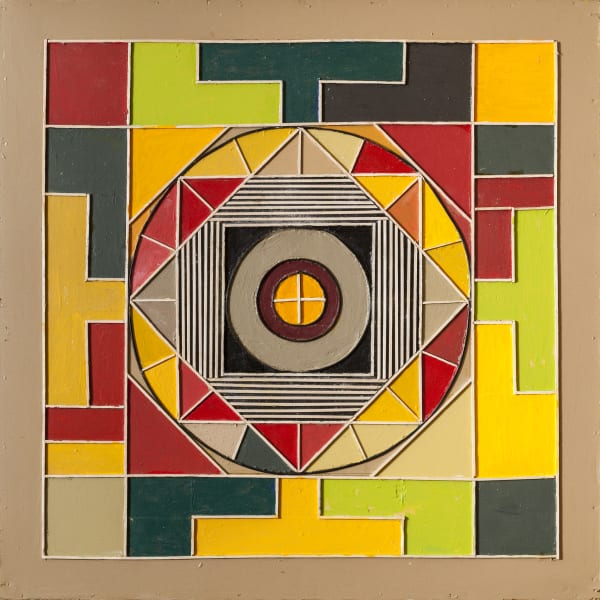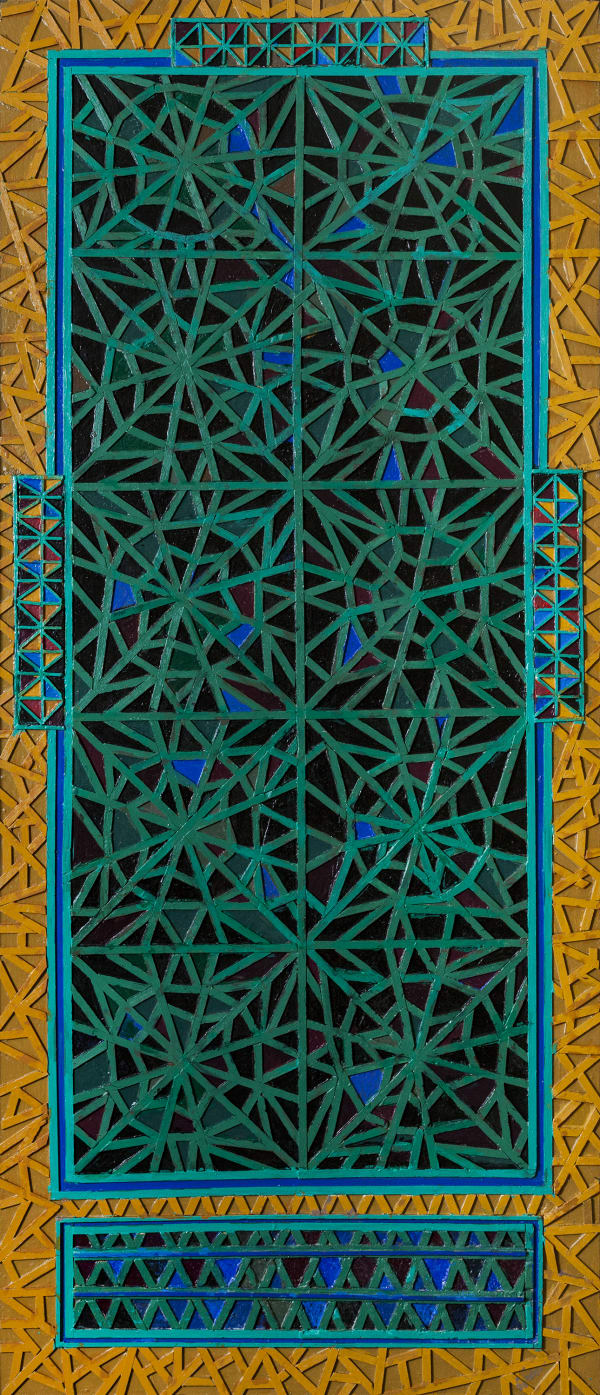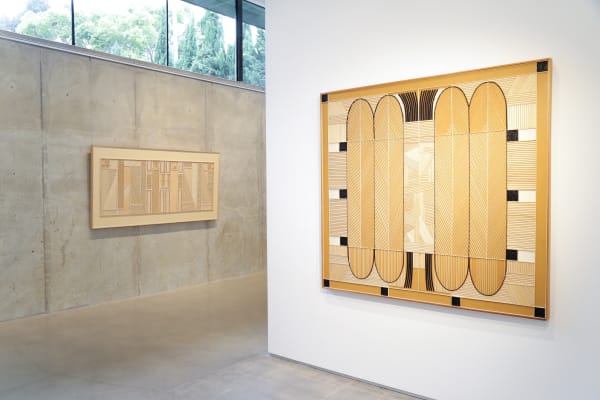Garo Antreasian
Antreasian’s rhythmic architectural, geometric, and ornamental shapes and colors, synthesis of multiple visual and textual traditions, and subversion of distinct artistic categories all point to the breadth of his multifaceted and ambitious creative output.
Committed to a geometric formal language since the mid-1960s, Antreasian spoke that language idiosyncratically, in a rich, modulated voice. Although his compositions can be forthright and simple, they never confront the eye with minimalist austerity. Rather, they brim with lovingly fashioned and rhythmically repeated detail. The works Antreasian fashioned from inlaid laminated wood reflect upon the exquisite craftsmanship of his sources, divorcing them from their functional origin. Similarly, his many works reliant on script - Arabic, Armenian, Latin - free line and contour from the rigors of verbal communication, allowing various alphabets to run free in a neo-Futurist “parole in libertà."
In the 1960s, a time when lithography was a dying art, Antreasian helped pioneer the revival of lithography through the Tamarind Lithography Workshop, which he co-founded in Los Angeles with June Wayne and Clinton Adams. Under Antreasian's guidance as the technical director, the Tamarind Lithography Workshop became a hub for artists, providing them with the necessary resources, expertise, and collaborative environment to explore lithography.
In 1982 Antreasian made a trip to the Near East in search of his Armenian roots which launched a crucial change in the artist’s practice. Heavily influenced by the intricate qualities of pattern and design in Islamic ornament and opened up to a new range of ethnic crafts, Antreasian began to paint on wood panels that he enhanced with balsa-wood strips to produce an array of rhythmic patterns in relief. The acutely organized and meticulously crafted artworks that Antreasian fashioned from inlaid laminated wood shows the artist tracking affinities in a range of artistic practices — Middle Eastern and Islamic tile- work and textiles traditions; the carved doors, tribal shields, and wicker mats of African iconography; and the monumental forms that evoke the ancient Mediterranean cultures.
Garo Antreasian (b. Indianapolis, IN, 1922) recieved his BFA from the Herron School of Art, Indianapolis, IN, in 1948. Antreaisan's exhibition history spans more than 50 years. His paintings, drawings, and master prints are part of the collections of over 60 museums across the United States, including the Museum of Modern Art, New York, NY; the Metropolitan Museum of Art, New York, NY; the Norton Simon Museum, Pasadena, CA; the Los Angeles County Museum of Art, Los Angeles, CA; the Art Institute of Chicago, Chicago, IL; the Indianapolis Museum of Art, Indianapolis, IN; the Guggenheim Museum, New York, NY, the National Gallery of Art, Washington, DC; the Philadelphia Museum of Art, Philadelphia, PA; and the Museum of Fine Arts, Santa Fe, NM. Antreasian has been the subject of solo exhibtions at the John Herron School of Art (2013); the Roswell Museum and Art Center (2011); New Mexico State Universtiy (1998); the Indianapolis Museum of Art (1994); the Albuquerque Museum (1988), Atlanta College of Art (1974). His work has been featured in shows that include the Minnesota Museum of American Art (2008); Sam P. Harn Museum of Art (1991); Worcester Art Museum (1989); Colorado Springs Fine Art Center (1986).
-

Garo Antreasian
Abstract Geometries 30 Jun - 22 Nov 2023Tufenkian Fine Arts is pleased to announce, Garo Antreasian: Abstract Geometries , a solo exhibition of paintings and prints by Garo Antreasian. This exhibition will feature work from three decades...Read more -

Multifaceted
Exploring the Bandwidth 16 Oct - 20 Nov 2021Tufenkian Fine Arts is pleased to present, Multifaceted , a two-part show featuring artworks by twelve contemporary artists co-curated between John David O’Brien and Caroline Tufenkian in the downstairs gallery...Read more -

Tribute: Works on Paper
20 Nov - 23 Dec 2020Tufenkian Fine Arts is pleased to present Tribute: Works on Paper, a group exhibition including works by Garo Antreasian, Hagop Hagopian, Varujan Boghosian, and Reuben Nakian. The exhibition will be...Read more












